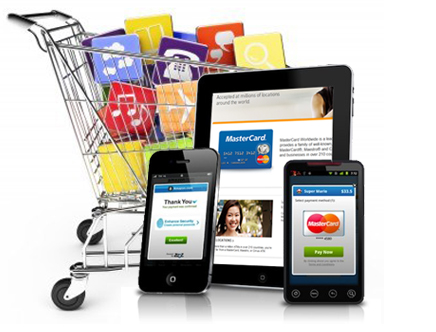 Criteo Research Reveals Mobile Dominates Path to Purchase Through Holidays and Beyond
Criteo Research Reveals Mobile Dominates Path to Purchase Through Holidays and Beyond
For the first time ever, the leading 25 percent of mobile retailers saw 50 percent of sales from mobile.
Apps drive a larger percentage of shoppers down the purchase funnel and convert at three times the rate of mobile web.
Marketers with the best mobile sites and apps take a significantly larger share of mobile transactions.
Criteo, the performance marketing technology company, today announced the analysis of its H1 2016 State of Mobile Commerce Report, which reveals insights into consumer shopping habits and forecasts predictions for mobile commerce across the globe. The report indicates that mobile devices are beginning to dominate the commerce landscape and retailers who can capitalize on this trend will be successful at driving transactions for the shopping seasons to follow.
“Mobile commerce has reached a turning point and is surpassing desktop purchasing as retailers continue to evolve their mobile shopping platforms,” said Elie Kanaan, EVP, Marketing, Criteo. “Retailers need to create a truly seamless mobile and cross-device experience and be prepared to engage with users no matter where they are along the path to purchase. Brands that master the mobile trend will have a head start on competitors and the momentum to lead the pack through the shopping seasons ahead.”
Criteo’s research shows brands can no longer ignore mobile platforms as a primary means to drive e-commerce sales. While technology enhancements have facilitated shopping on mobile, marketers are challenged with targeting consumers across every environment along the path to purchase. Retailers must employ both strong app and mobile presences together with mobile targeting strategies to engage with shoppers wherever and whenever they browse and purchase to boost revenue.
Research Highlights:
Mobile Shopping Dominates
The number of shoppers going online, be that via desktop or mobile, to both browse and purchase products continues to grow with a higher rate of transactions captured on mobile devices than via traditional purchase paths. Retailers who have optimized their mobile shopping experience accordingly – both in-app and on mobile – are pulling away from their competitors and continue to see strong traction from consumers:
In H1 2016, top retailers in the US grew mobile sales by 30 percent year-over-year to now capture 52 percent of all e-commerce transactions.
Across all US retailers, mobile share of e-commerce transactions increased by 17 percent year-over-year.
Fashion and Luxury retailers pulled far ahead of the pack in Q2 2016 with over 40 percent of e-commerce transactions taking place on mobile – an increase of 17 percent over Q2 2015.
Smartphone-Focused Shoppers
The smartphone continues to expand its prominence as the go-to shopping device, especially as features like fingerprint recognition make transactions effortless, while tablet purchasing steadily declines. As more retailers design mobile-friendly sites, mobile transactions are steadily increasing. All retailers should ensure they have a mobile-centric marketing strategy that embraces in-app and mobile web to meet their smartphone-focused audiences:
For the first time ever, smartphones delivered the majority of mobile transactions in every major global market[i].
Smartphones continue to dominate US retail mobile transaction share by volume with 67 percent of transactions – representing a 26 percent growth rate year-over-year.
A majority of mobile commerce transactions today are completed on iPhones. However, a 57 percent year-over-year growth in transactions on Android devices – 1.5 times that of iPhones – demonstrates their ability to quickly regain ground in mobile commerce.
Sophisticated Apps Drive High Spending
Top retailers are building savvy, intuitive and useful shopping apps that give consumers a seamless way to shop on mobile devices. Capabilities like home screen presence, instant loading, offline content, push notifications, personalization and access to native functionality make the mobile shopping experience richer and more immersive for consumers. Brands that can deliver this feature-rich environment and create a unified, consistent and relevant experience for shoppers regardless of device will succeed in driving retention and conversion rates:
Retailers with a sophisticated mobile app presence saw up to 54 percent of their mobile transactions generated in-app in Q2 2016, an increase from 47 percent in 2015.
Apps close far more deals than other online shopping environments and convert three times more shoppers than mobile web.
For the first time, mobile apps saw higher order values than desktop and mobile web, with an average of $127 spent in-app versus $100 on desktop and $91 on mobile web.
Leaders in mobile app maturity drive 90 percent more conversions than emerging retailers


